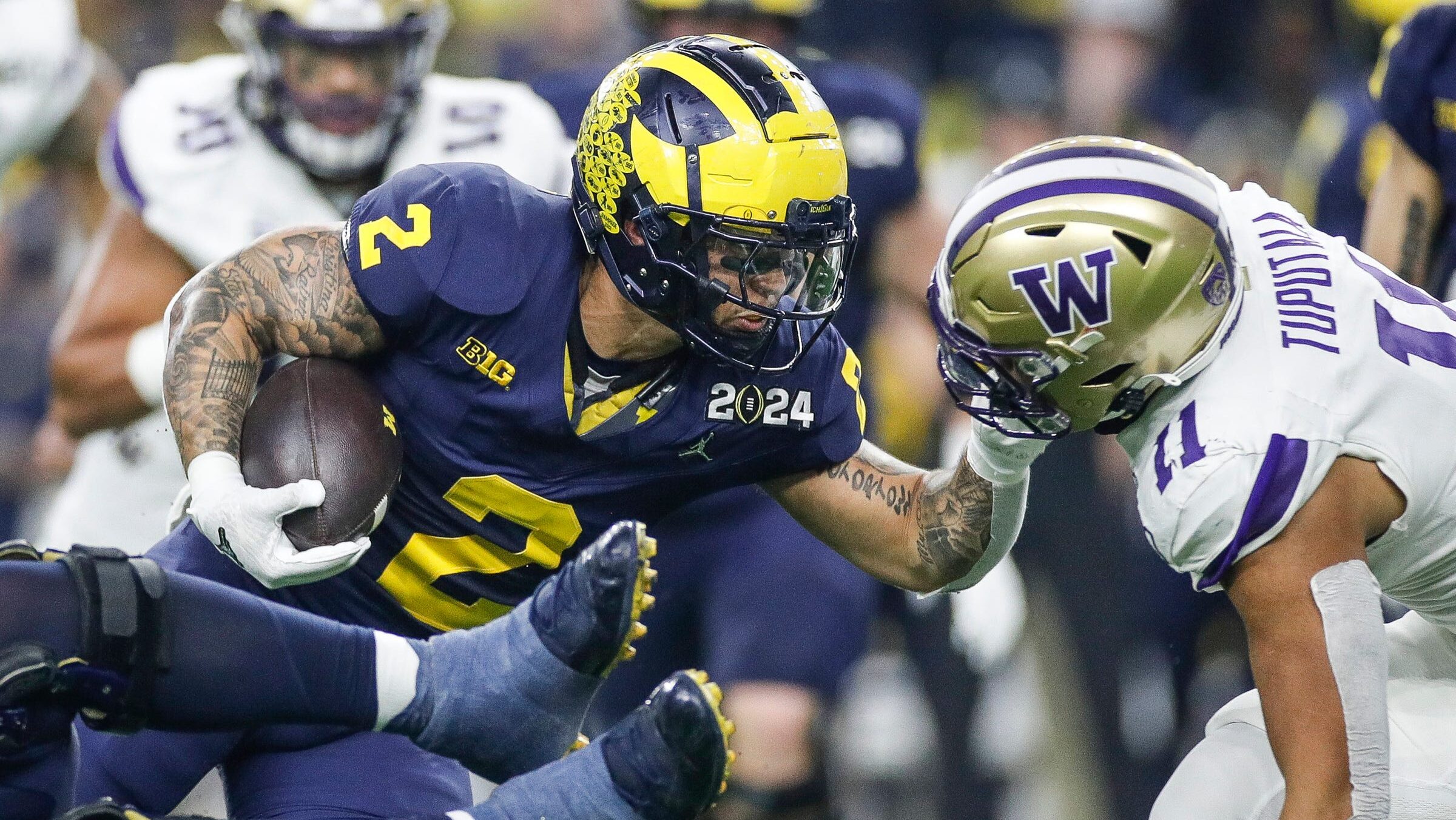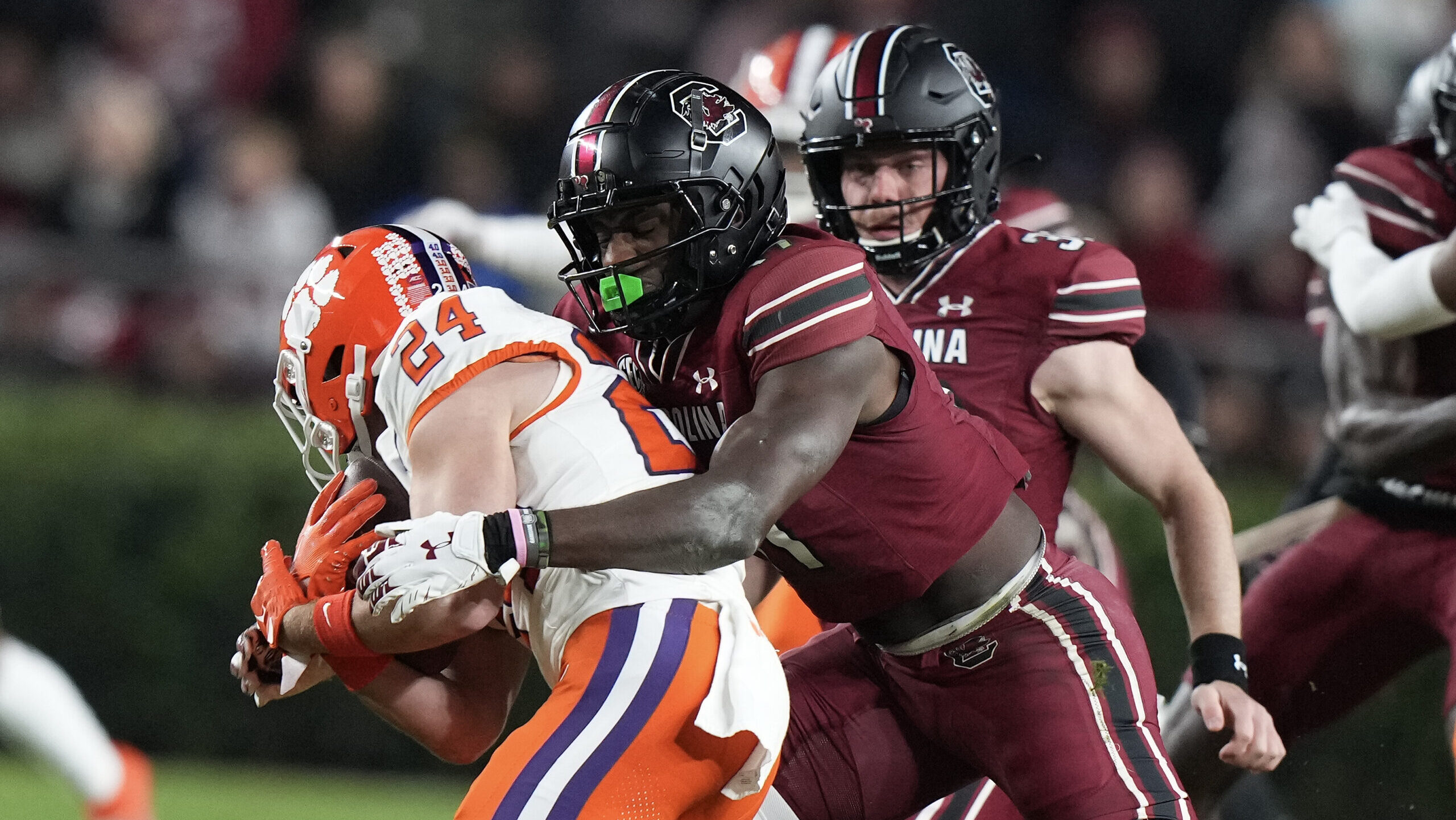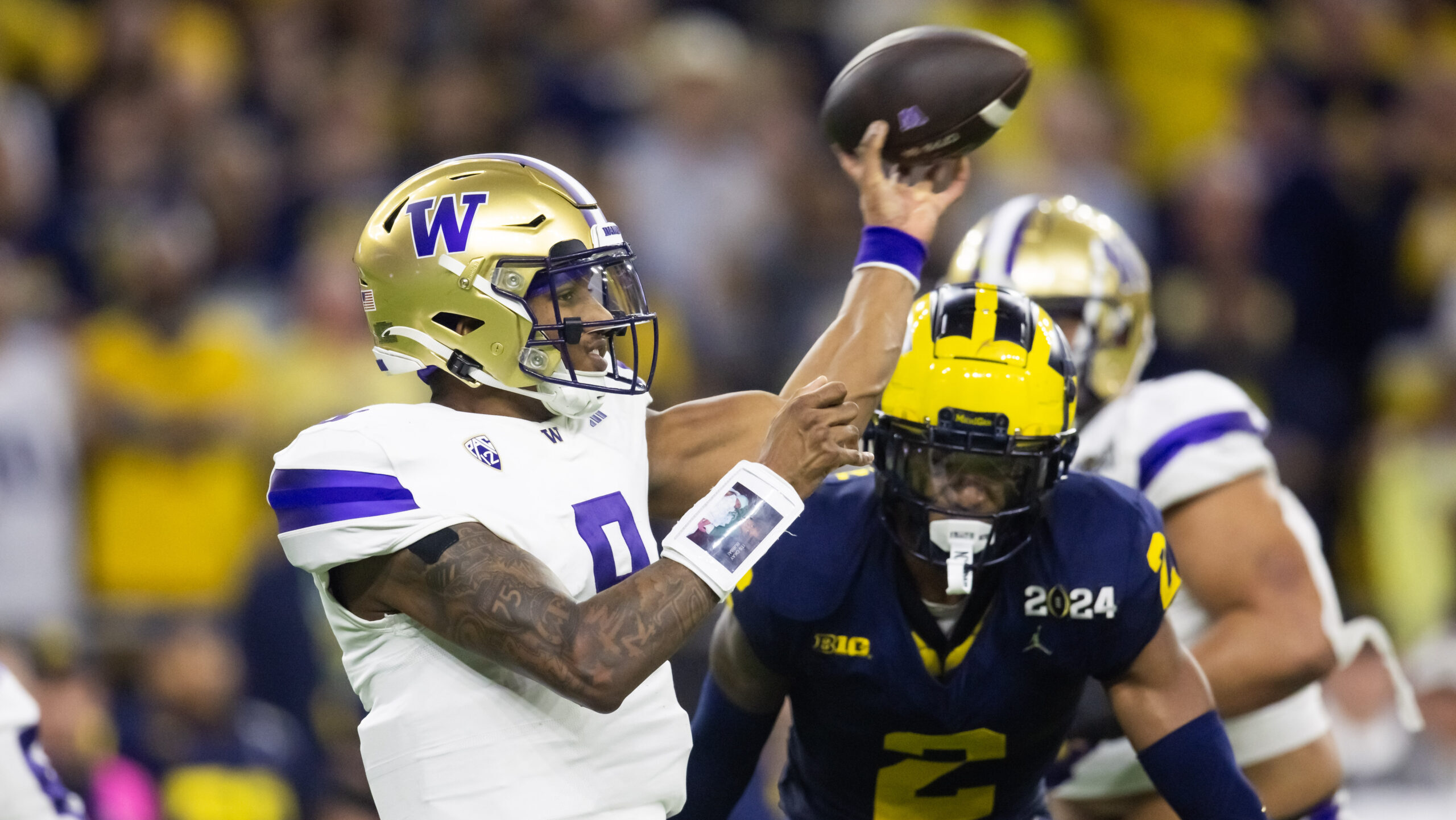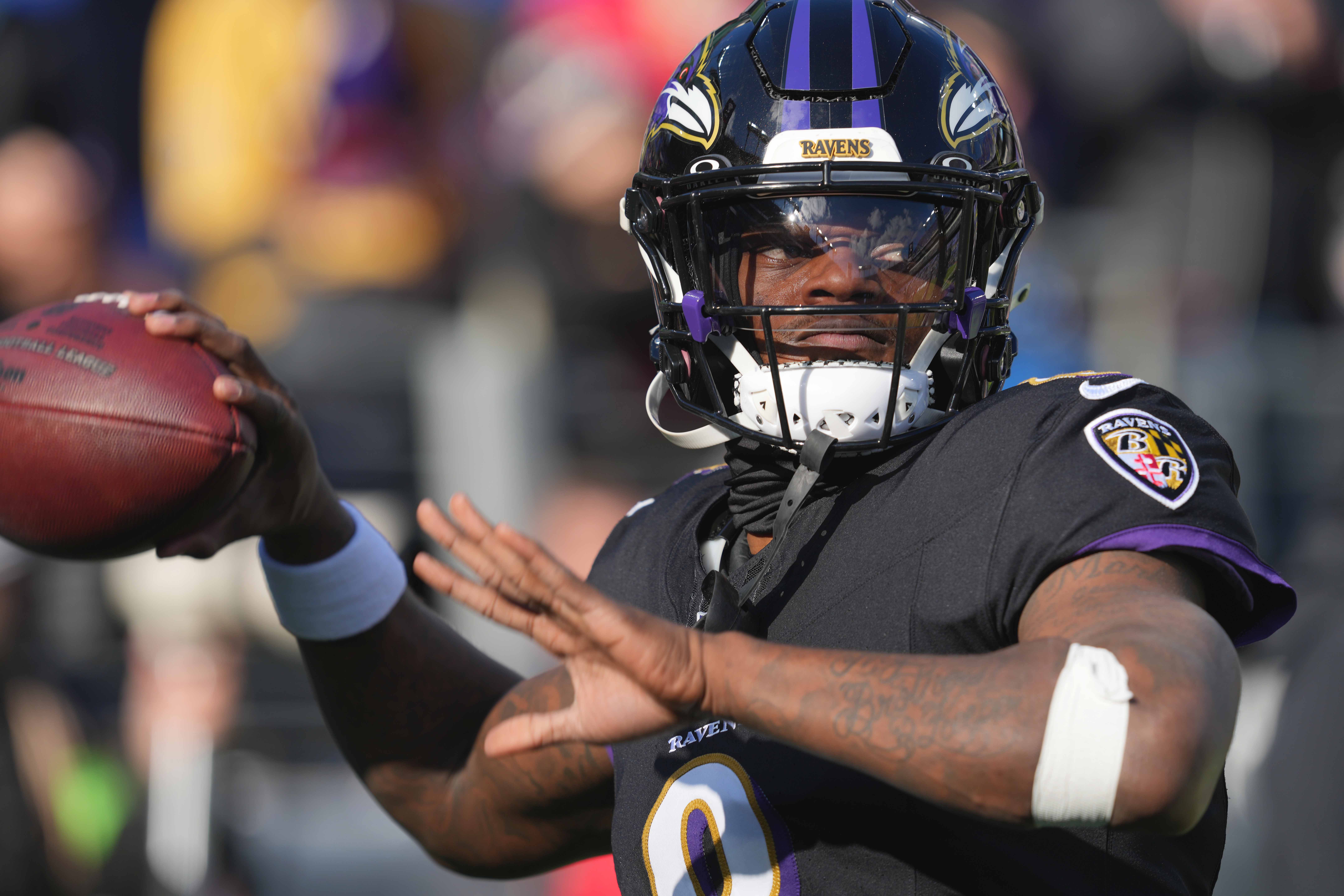Analysis
6/27/23
5 min read
Dynasty Value Check: Jaxon Smith-Njigba vs. Quentin Johnston
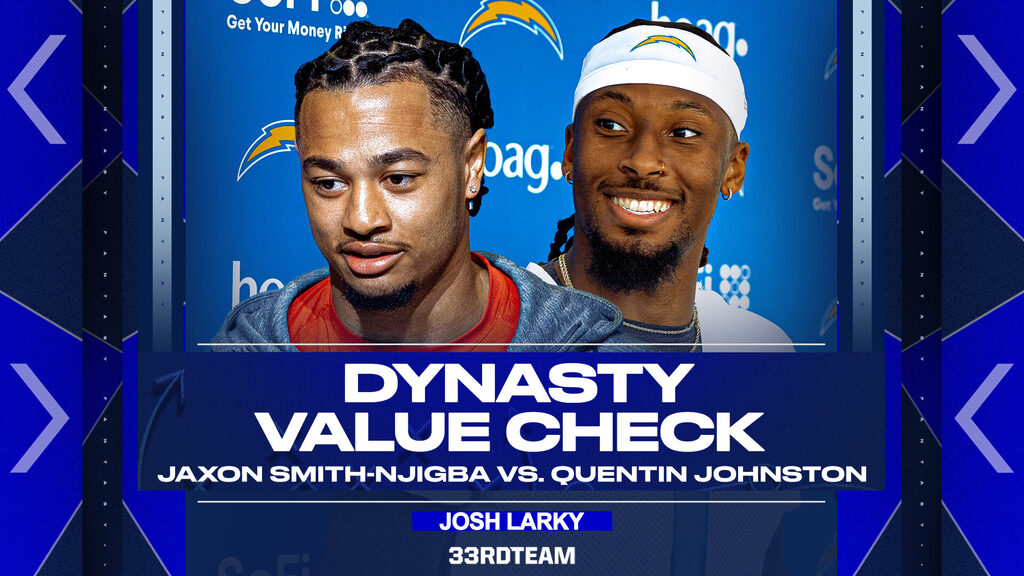
Rookies are one of the few dynasty fantasy football assets that can make you a fortune or lose you one. In other words, investing in rookies has massive implications. This means we must find an optimal way to invest in rookies.
To do this, there are two important things to consider: the prospect’s range of outcomes as an NFL player and the cost to acquire that range.
There are two rookie wide receivers separated by roughly a round and a half of average draft position (ADP). Yet, in The 33rd Team Dynasty Rankings, their ranked back-to-back. They are Jaxon Smith-Njigba and Quentin Johnston.
These two fit the criteria of rookies who can cause massive value swings. To make the most optimal decision, we must first get a sense of each of their range of outcomes.
To determine a prospect's range of outcomes, we compare the rookies to historically similar prospect profiles. These similar profiles are identified based on a set of key variables including collegiate production, how soon they entered the draft and draft capital.
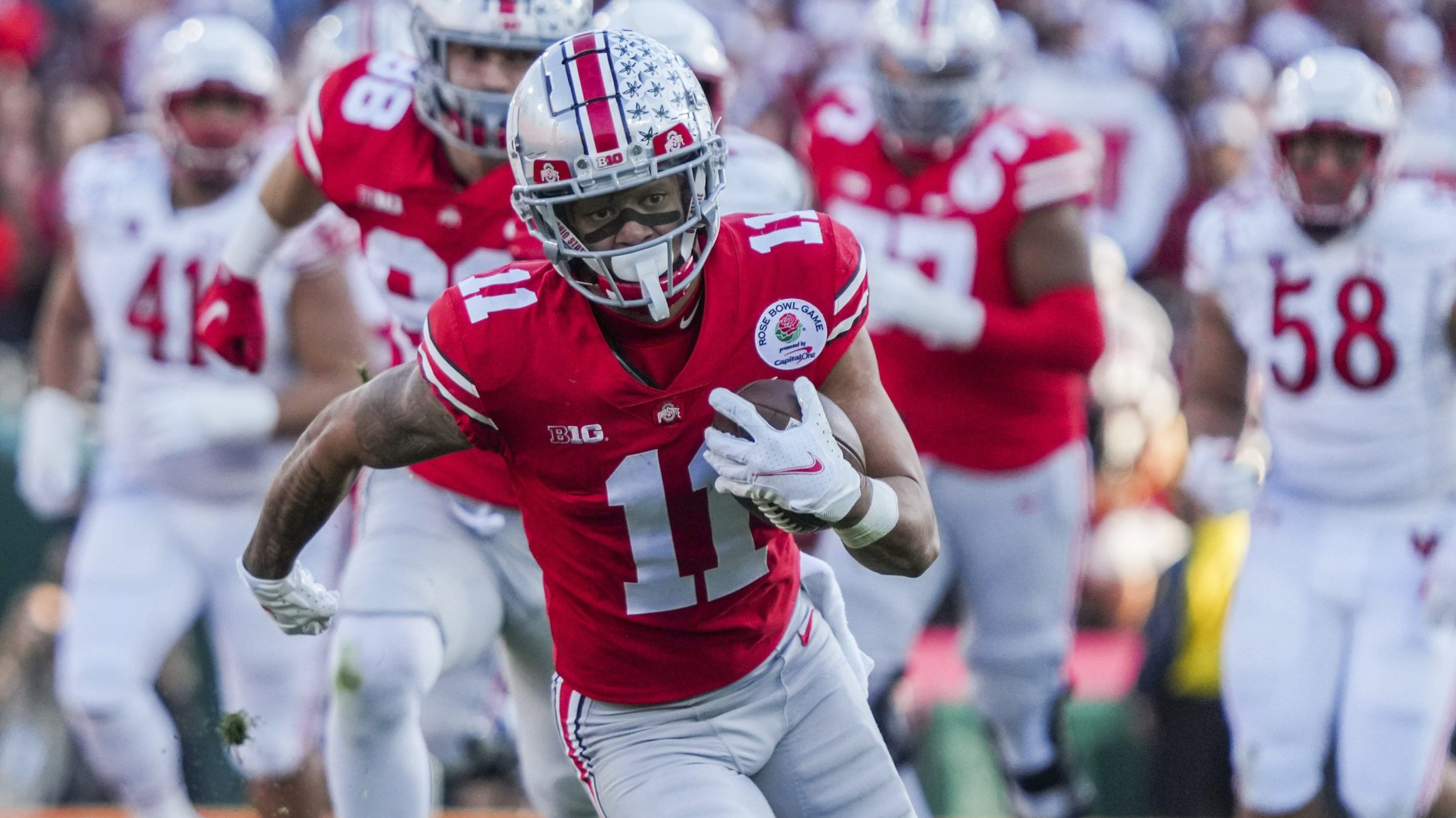
 Jaxon Smith-Njigba, Seattle Seahawks
Jaxon Smith-Njigba, Seattle Seahawks
Let’s start with Smith-Njigba, who was the highest-drafted receiver in the 2023 NFL Draft and holds the higher ADP of the two. The Seattle Seahawks picked him 20th overall. Let's see what his prospect profile looks like.
Using hit rates based on draft capital, from 2006-2021, there were 58 receivers drafted in the first round. Of those 58, 31 (53.4 percent) have posted at least a 14+ PPG season in their career and 18 (31.0 percent) have posted at least a 16+ PPG season. While the hit rates from general first-round draft capital give us a glimpse of what a prospect could be, we can make it more specific to Smith-Njigba
He got on the field at Ohio State as an 18-year-old freshman playing behind sophomores Garrett Wilson, Chris Olave and Jameson Williams. Getting on the field that early with a wildly stacked receiver room shows promise. But it was not until his sophomore year that Smith-Njigba's play took off.
In that 19-year-old season, he ran more than five times the number of routes he ran the prior season and blossomed. He was one of just four Power 5 wide receivers to post 3.00+ yards per team pass attempt and 20.0+ PPG at 19.
Yards per team pass attempt is a metric that captures both volume and efficiency and best demonstrates Smith-Njigba's impact. He joined Dez Bryant, Ja’Marr Chase and Michael Crabtree in doing so.
Smith-Njigba played in just three games his junior season due to a hamstring injury, but the prior season showed enough for him to forego his senior season for the draft. That is another positive data point in his profile.
If we add early-declare status to the first-round hit rates, those percentages jump to 69.7 percent hitting at least a 14+ PPG season and 48.5 percent hitting at least a 16+ PPG season. We haven’t included his impressive production profile and a few other minor data points that go into the model. When we do that, we get an "Elite Alpha prospect" in Smith-Njigba. We then get our range of outcomes below.

 Quentin Johnston, Los Angeles Chargers
Quentin Johnston, Los Angeles Chargers
Spoiler alert: Johnston has the same prospect bucket as Smith-Njigba. How could this be? Johnston’s 16.4-yard college average depth of target (aDOT) was nearly double Smith-Njigba’s 8.6. Johnston also went to a school where the target competition and simple rating system were much lower.
But a range of outcomes is never meant to find identical profiles. In actuality, no profiles are exactly the same. We’re trying to find similar prospects whose likelihood of success is essentially the same. Johnston just happens to be a similar prospect.
He went one pick after Smith-Njigba and declared early for the draft after his 20-year-old junior season. But was Johnston also impressively productive during his time at TCU? The simple answer is yes.
He was wildly productive from the time he stepped on the field as an 18-year-old freshman until the time left. Instead of just throwing numbers out, we can group Johnston's impressive, continued success to other top 25 draft selections historically.
The other seven wide receiver prospects to post 2.00+ yards per team attempt each collegiate season they played in are Calvin Johnson, Justin Jefferson, AJ Green, Mike Evans, CeeDee Lamb, Amari Cooper and Marquise Brown. That list shows just how impressive Johnston’s collegiate production was.
The three main data points used when constructing a prospect profile are the level of production posted in college, how soon they entered the draft, and what the NFL thinks in terms of draft capital. Johnston and Smith-Njigba are similar in that regard.
Even if we add athleticism and take first-rounders who posted a 2.75+ yards per team pass attempt at 19 years old with an 8.00+ Relative Athletic Score (RAS), Johnston and Smith-Njigba are again in the same grouping. Comparables include Julio Jones, Bryant, Chase and Rashod Bateman.
Optimal Decision Making
So, when we have two rookie wide receivers in Johnston and Smith-Njigba with the same range of outcomes, it most likely comes down to cost. That leads us to the other piece of optimal investment. We need to ask ourselves, what does their range of outcomes investment cost?
In this comparison, one has an ADP at the beginning of the fourth round as the 12th wide receiver off the board. For reference, Chase went in a similar range leading up to his rookie season. The other is going past the halfway point of the fifth round as the 20th wide receiver off the board.
Both are elite prospects and are likely to be strong fantasy producers. But that never means it’s without risk unless you are a Chase-level prospect, where your range of outcomes somehow looks like this.

No matter what you do, there will be risks when making dynasty investments, especially regarding rookies. At the end of the day, make sure you're taking optimal risks.
Follow The 33rd Team Podcast Network on Spotify and Apple Podcasts.


